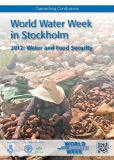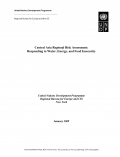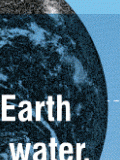The increased frequency of water shortages parallel to growing demands for agricultural commodities in the lower reaches of the Amu Darya River, Central Asia, calls for improving the system-level water use efficiency, by using interventions at the field level. Despite the existence of various...
Resources
Browse the Resources
After a research trip in Central Asia, in autumn 2007, the authors of this document organized a course at the Helsinki University of Technology on Global Water Issues, with a special topic on the Central Asian water problems. After the succes of the course, the authors, along with the Helsinki...
The "Overarching conclusions on water and food security" is an output report from the 2012 World Water Week in Stockholm, where over 2,500 experts gathered to discuss solutions to ensure water and food security for our entire globe. As the organiser, the Stockholm International Water Institute...
The article focuses on cooperative adaptation strategies at the community, water user association, district, and national levels along the Khojabakirgansai, a small transboundary tributary of the Syr Darya in Kyrgyzstan and Tajikistan. Data were collected in the basin through in-depth expert...
Central Asia’s poorest countries find themselves particularly vulnerable to water, energy, and food insecurities. Tajikistan experienced a “compound crisis” during the winter of 2008, when exceptionally cold weather caused breakdowns in the country’s energy infrastructure, damaged winter crops...
Greenhouse gas emissions are largely determined by how energy is created and used, and policies designed to encourage mitigation efforts reflect this reality. However, an unintended consequence of an energy-focused strategy is that the set of policy instruments needed to tap mitigation...
The cost of managing water resources is increasing due to increased demands from urbanisation, population growth and climatic threats – to name but a few challenges. Financing is not only needed for infrastructure and services, but also for governance, regulation, monitoring, training and...
Water is essential to life. Water resides in everything—even on your dinner plate. It is necessary to produce the food you eat. Some foods are greedier than others. Their production requires a lot of water—water that could fulfil other needs and be used in other ways.
The UN Watercourses Convention User's Guide provides an article by article explanation of the text of Convention on the Law of the Non-navigational Uses of International Watercourses; which was adopted by the UN General Assembly on the 21st May 1997. The Guide is aimed at a range of readers...












